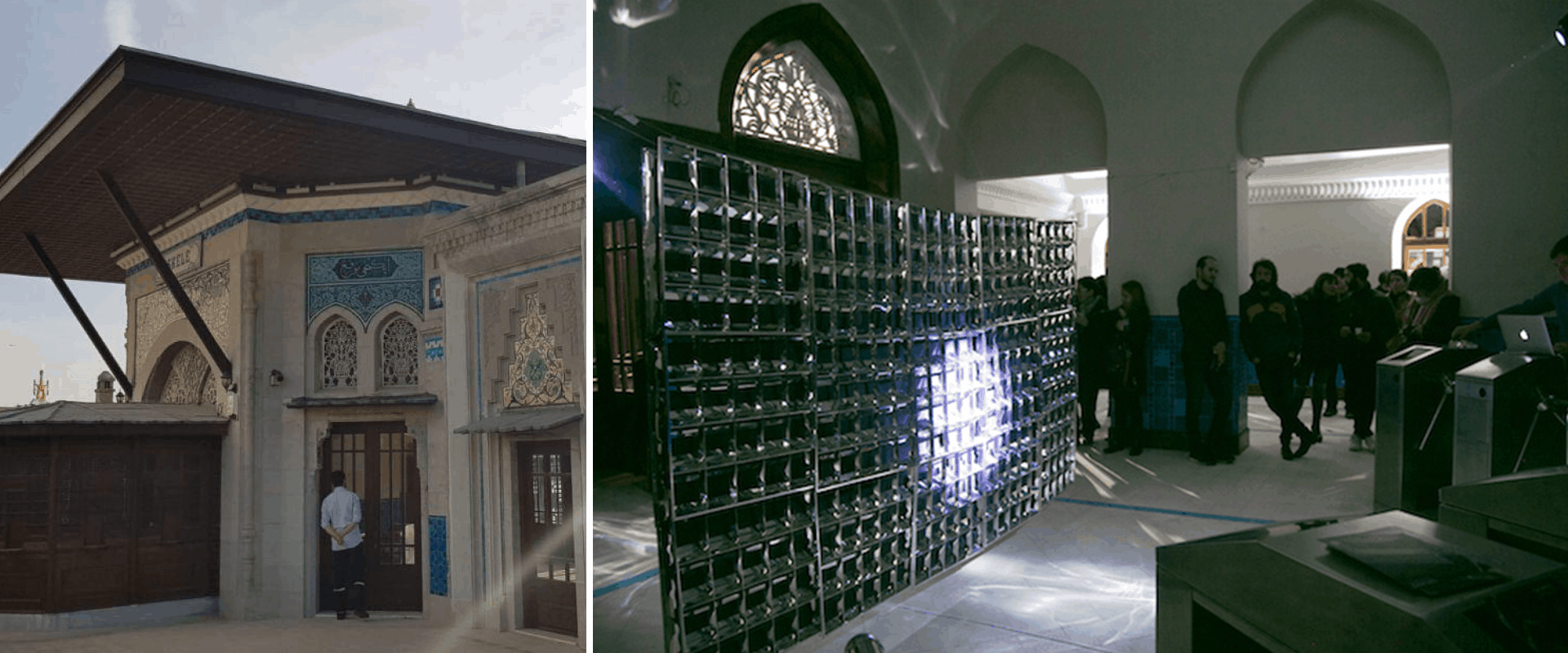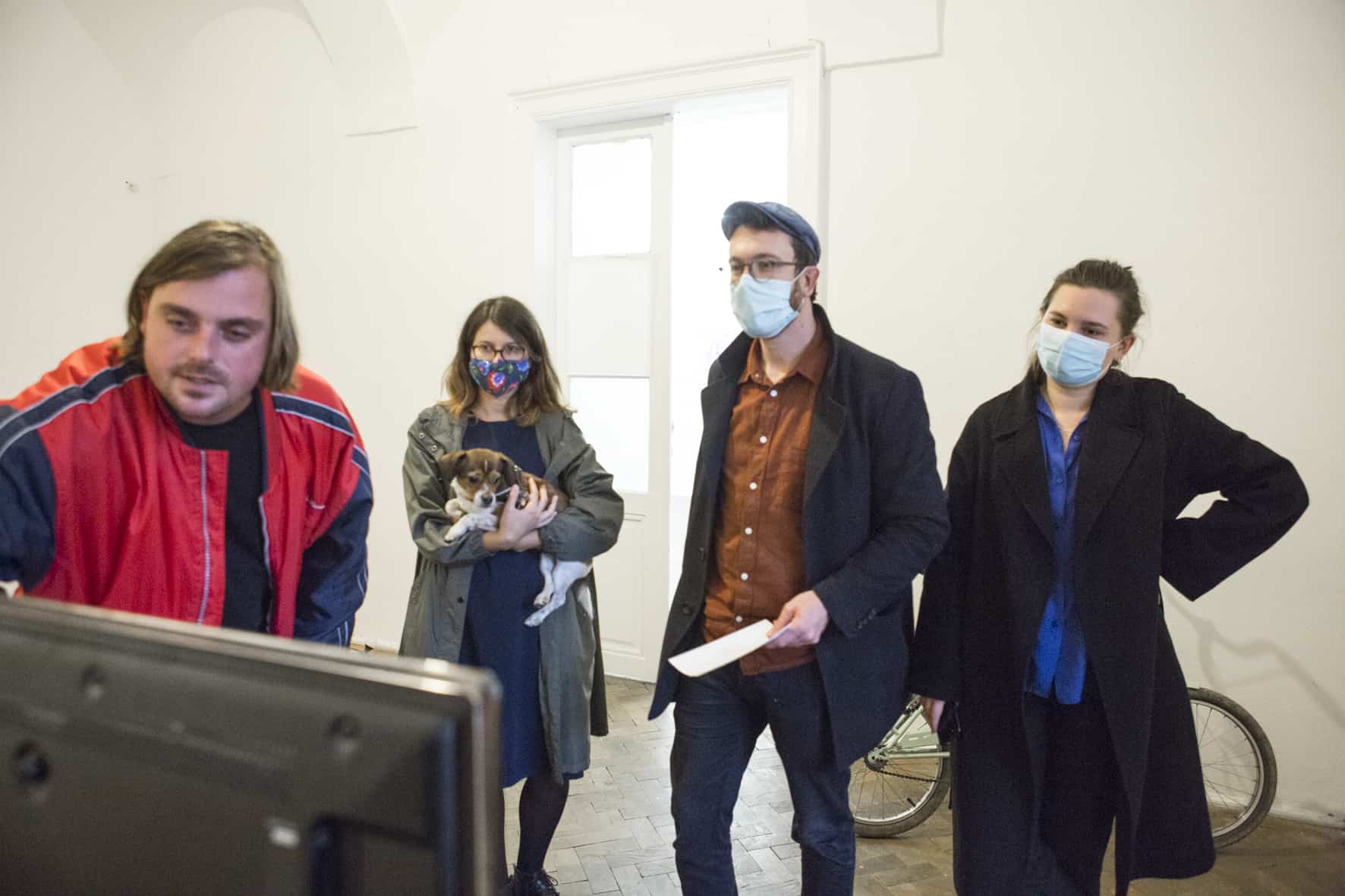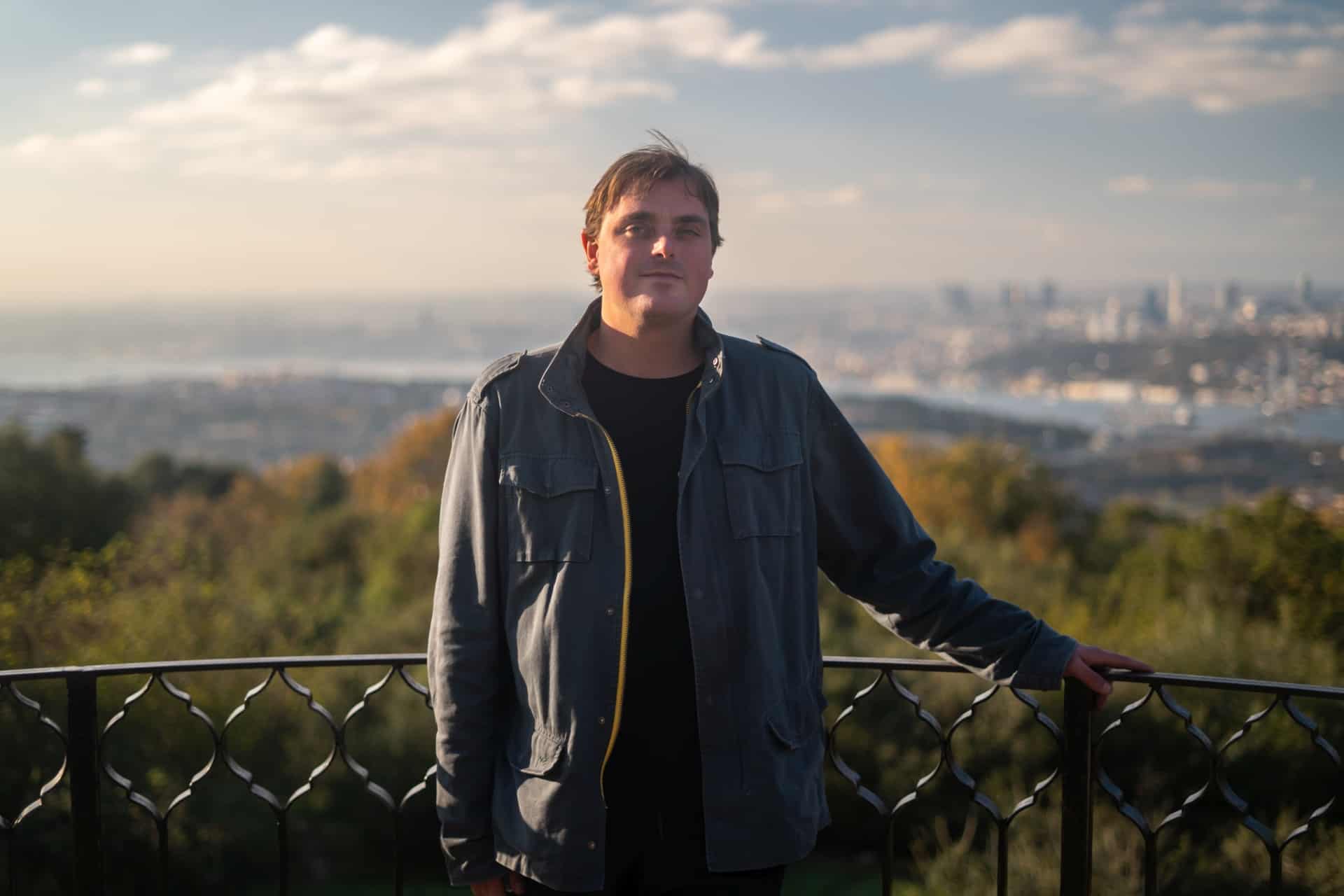He arrived in Košice during a challenging time of the COVID-19 pandemic. Nevertheless, he is trying to make the most of his time here. Together with Turkish artist Orhan „aib“ Kavrakoglu, he will create an unusual audio-visual experience for the locals, which will connect a specific location in the city with a point on the orbit. Who is Abel Korinsky, and why did he want to be a part of the Art & Tech Days festival?
In cooperation with K.A.I.R – Košice Artists in Residence, we launched an open call for media artists in 2020. It has become a regular part of CIKE’s activities as it aligns with its representations of the city of Košice in the UNESCO Network of Creative Cities. The theme of the residency – Human Responsibility – has attracted the Berlin-based artist’s attention.
Abel comes from a small German town but has established himself in Berlin. He runs Studio Korinsky together with his twin brother Carlo. They create atmospheric installations and use them to transform spaces into holistic works of art. Abel became very passionate about art during his Literature, Social Sciences, and Classical Guitar studies and he loves that his job gives him freedom to live by his own rules. He draws most of his inspiration from places, such as the Grace Cathedral in San Francisco, artists like Christo and Jeanne-Claude, or James Turrell, and moments when he happens to slow down and observe his surroundings.

© Tatiana Takáčová
“It is essential for me that technology does not become the essence of art but rather a part of it, while the final result should bring any viewer a magical experience.”

© Eren M. Bozbas 
© Abel Korinsky 
© Orhan „aib“ Kavrakoglu
Can you tell us more about the project “Free Space? – Common good?” which you are working on in Košice? What motivated you to come here and work with Starlink data?
I came up with the entire idea during a casual night out on the roof of a building in Istanbul while watching a set of satellites in the sky. Together with my good friend Orhan, we began to develop the idea of using data from satellites that orbit the Earth. We could easily access the data from the Starlink satellites, which range in altitude from 500 to 600 km. Besides, SpaceX’s project aims to create a network of 12,000 satellites eventually. From an astronomical point of view, they can be problematic because of their solar panels, which reflect light and can cause light pollution. It is not up to me to judge whether this is right or not. However, I wonder whether private companies have the right to occupy space in a way that will fundamentally change its appearance for all of us.
You create site-specific installations, that is, installations adapted to a specific space. Can you elaborate on that?
I work with technology, and I use measurements to examine a specific place’s lighting and sound system. However, these are the basic steps I take in the course of each project. The projects I work on always reflect the space in which they are located. For example, I created an installation at the famous Haydarpasa train station in Istanbul, which also happens to be a port. I collected technical data, which I used to create a very poetic work called “yakamoz,” which translates to a “reflection of the moon on the water surface.” I gave this natural phenomenon my own form and transferred it to the building’s interior, which is connected to the water surface.
Working with satellites is site-specific in its essence. We look at a specific place in the sky and use GPS data to pinpoint its location. From there, we transfer satellite data to a map made up of a large network of light bulbs. In this way, the work in a specific place is directly connected to the sky above it. We clean the space above us (for this project) of unnecessary space objects, stars, planets and monitor only human-made technical infrastructure.

How do you refer to the topic of Human Responsibility – responsibility towards the world, the environment, the universe?
It is necessary to look at the work in a broader context. As an artist working with this topic, I recognize at least four issues that are related to space and how we use it. The first one is our outer space. Ten years after the first Sputnik satellite launch, nations have signed a contract on how to operate in this new shared space. Does this also mean that private companies can use it under the same rules? The second example is the North Pole and the Arctic. Once Russian explorers have reached the seabed 4,261 meters below the North Pole, they planted their country’s titanium flag on it. Is it right to follow the rule “first-come, first-served basis” when it comes down to our Earth? The other two important issues are public spaces in cities and common space on the Internet. It should be the responsibility of the entire humanity to take care of the space we share in all cases.
In what state is your installation now, and what will it look like once it’s finished?
Technically, it is on the right track. The system that tracks the satellites and collects the data is working. With Orhan, we are still working on the visual side of the project and the sound system connected to the incoming and outgoing satellites. A site-specific artistic experience is part of the artwork. However, this is currently not possible due to the COVID-19 pandemic.

© Tatiana Takáčová 
© Tatiana Takáčová
“I came to Košice because of the Art & Tech Days festival. I could not imagine a better opportunity for me to implement this project. It is an interesting event for me, which perfectly combines artistic expression with technology. It seemed to me like the perfect place to work, develop, and present my art.”

© Tatiana Takáčová 
© Abel Korinsky
The pandemic had an impact on your work, as it did for many artists. Is there anything positive you can take away from this period?
Of course, the pandemic has affected the lives of each of us in different ways. It is especially the cultural sector that has suffered and continues to suffer. But to be honest, 2020 was an opportunity for me to rethink my own artistic practice, as well as the future vision of our studio. Without the coronavirus pandemic, I would never have gotten to this topic, I would not have started the current work, and I would not have cooperated with Orhan. Under normal circumstances, I travel a lot, prepare installations, work on new productions. But this period allowed me to stop for a moment and look back at my own artistic process.
Your work will be part of the Art & Tech Days festival. Why should people come to see it?
My idea is to introduce the installation to different groups of people. On the one hand, visitors will watch and listen to satellites launched into space in a unique setting created by lights and sound effects. Therefore, they should come and experience this work of art, see whether they feel something or not! On the other hand, people interested in art that uses technology, reality, and data will find pleasure in seeing how the whole system comes together and what happens to data in relation to the artwork.
You participated in several art residencies in different countries. How do you think an artist can benefit from such an experience?
I really enjoy living in a foreign country. However, an art residency may not be for every artist. What is more challenging is definitely the work management because, at home, one already has a certain routine. By this, I mean friends you can contact, shops where you can find the necessary material, and no language barrier… So if you need to create something fast, it’s better to do it at home.
Although work management was always more demanding during residencies, I have met a lot of people during each stay and in some cases, we even became good friends. Probably the biggest benefit is the potential subsequent cooperation – in my case, it happened with friends in Australia, Germany, Turkey, Bulgaria, and San Francisco. So residencies for me have always been a great way of finding new people for further cooperation. It’s not that I was desperately looking for it, it just happened.

In what way has the residency in Košice been special so far?
Košice is different, especially because of the pandemic. Usually, artists are interested in a residency because of the good reputation of the place. Sometimes they want to get to know a specific city or they get offered good working conditions. However, this year, it is also about the desperate search for work in the corona times (laughs). For me, it was a combination of everything. Working conditions in the Šopa Gallery, which offers its premises to artists involved in the K.A.I.R. – Košice Artist in Residence, appeared ideal for my work. The opportunity to exhibit the result at the Art & Tech Days festival was also a strong motivation. I usually research before choosing a place for residency because I want to make sure that I fit into the program and my stay will be pleasant for both parties. I think that’s exactly what I managed to achieve in Košice. A lot of things are different than I expected because of the coronavirus pandemic. However, my stay in Košice has been great so far because of the people I have met here.
Media art residencies in Košice are organised in cooperation with K.A.I.R. – Košice Artist in Residence.
